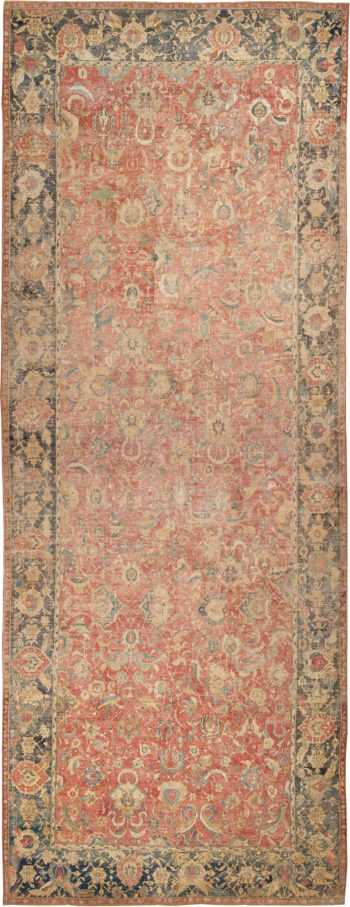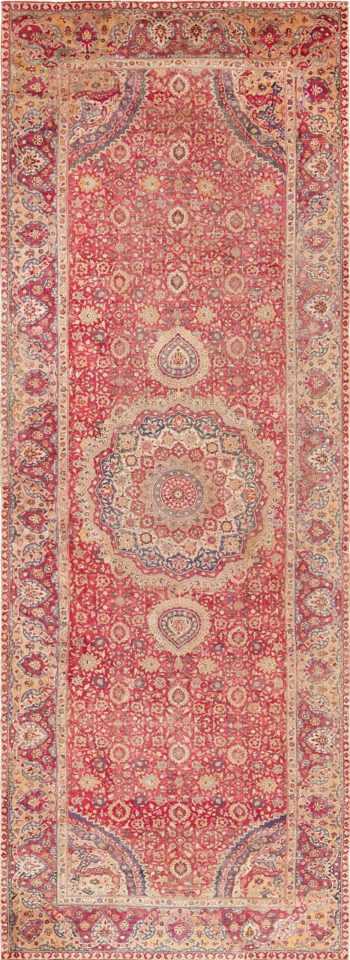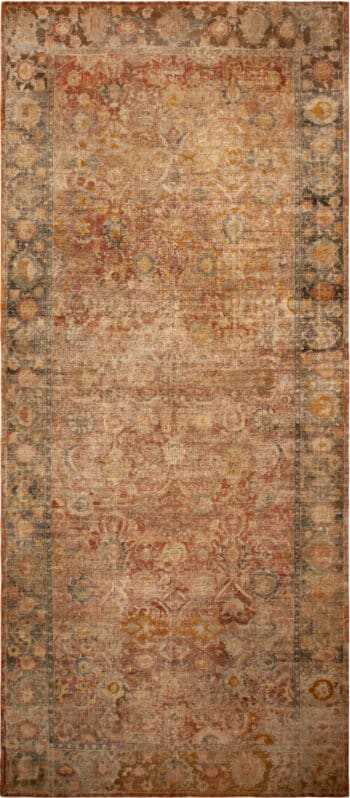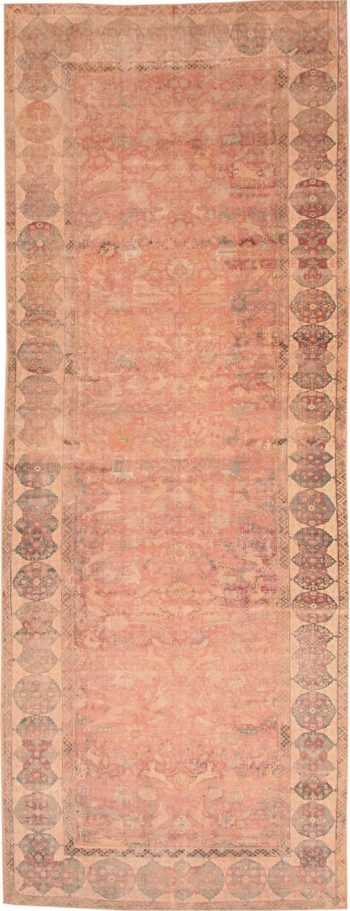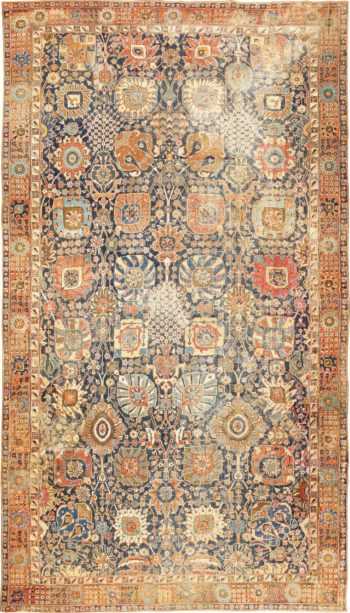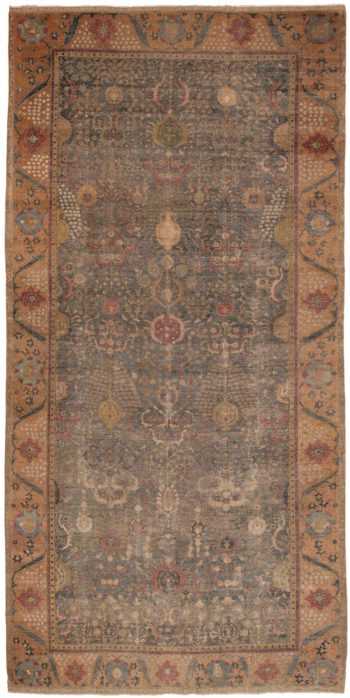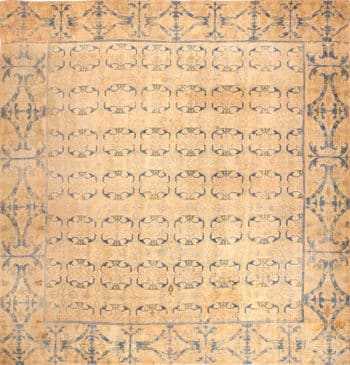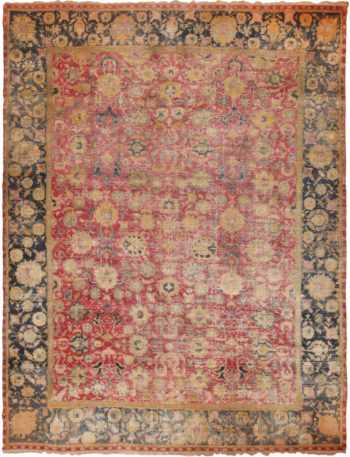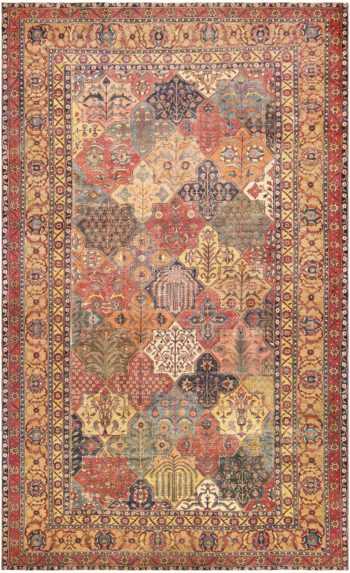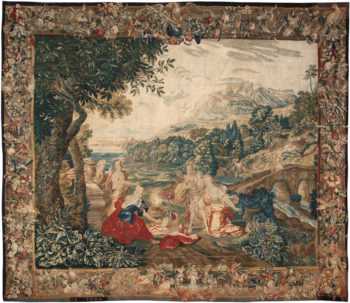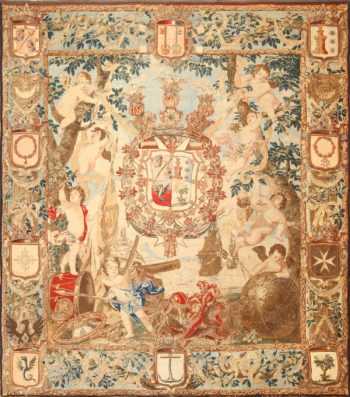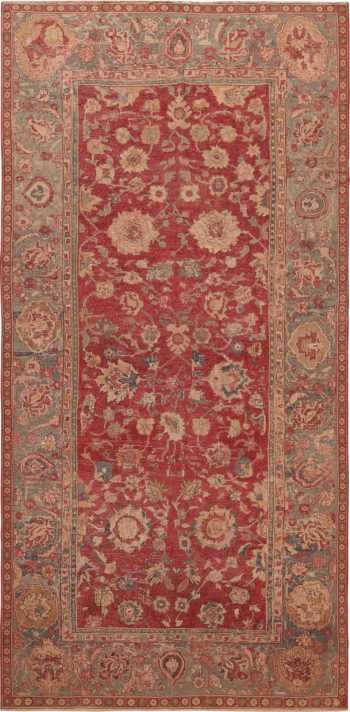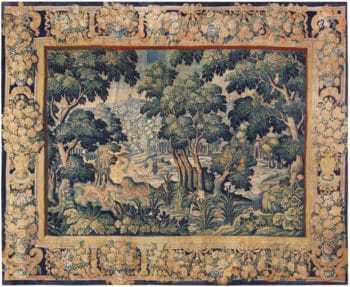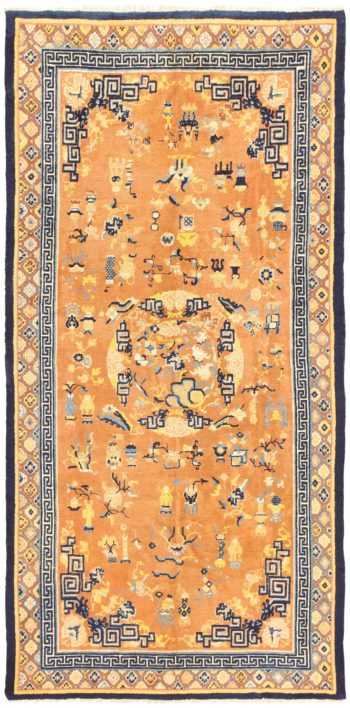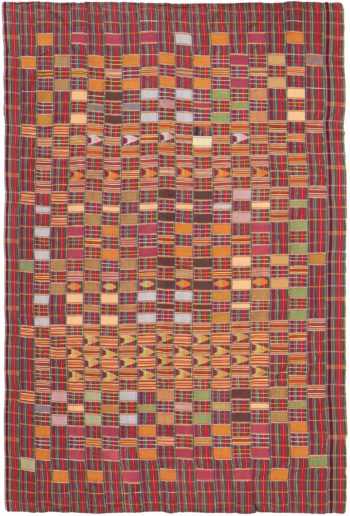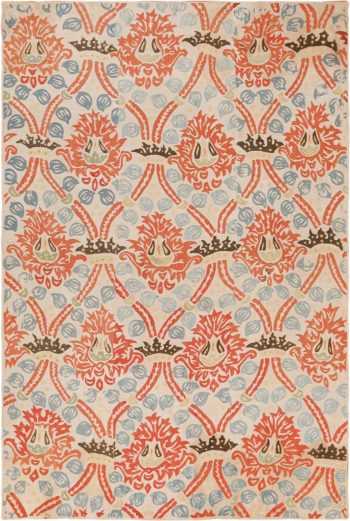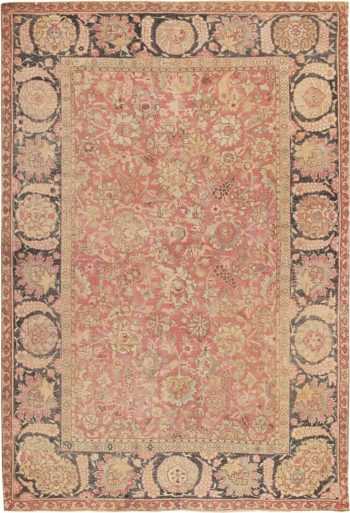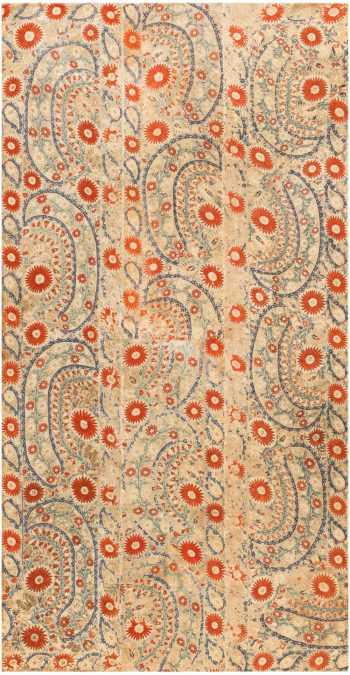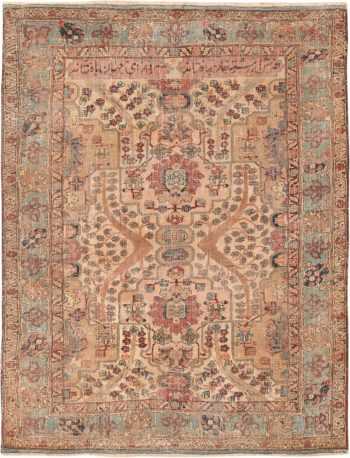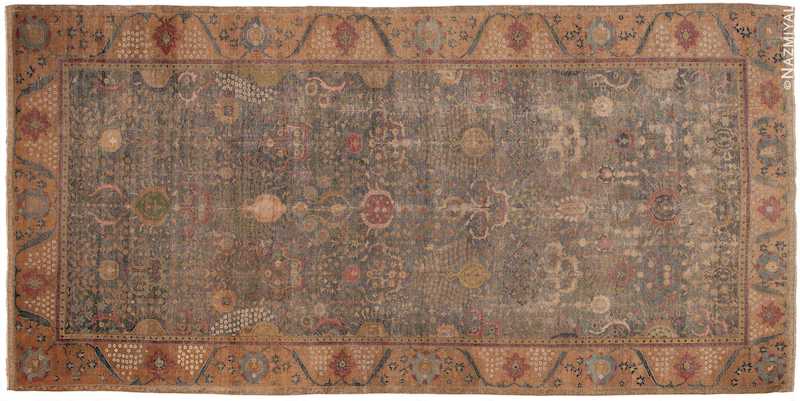17th Century Rugs
View our below collection of 17th century area rugs:
Oversized Antique 17th Century Persian Esfahan Oriental Rug 44143
$285,000.00Size: 11 ft 4 in x 30 ft (3.45 m x 9.14 m)Large 17th Century Indo-Portuguese Summer Carpet 46159
Size: 13 ft 2 in x 26 ft (4.01 m x 7.92 m)Large Antique 17th Century Mughal Gallery Carpet 47597
Size: 9 ft x 24 ft 8 in (2.74 m x 7.52 m)17th Century Antique Persian Isfahan Gallery Size Rug 72915
Size: 9 ft 8 in x 22 ft 3 in (2.95 m x 6.78 m)Antique 17th Century Turkish Smyrna Rug 70267
$125,000.00Size: 11 ft 8 in x 21 ft 3 in (3.56 m x 6.48 m)Antique Gallery Size 17th Century Isfahan Persian Rug 3338
Size: 7 ft 7 in x 20 ft 4 in (2.31 m x 6.2 m)Antique 17th Century Persian Vase Kerman Carpet 45770
Size: 11 ft 5 in x 20 ft 2 in (3.48 m x 6.15 m)Large Shabby Chic Antique 17th Century Persian Isfahan Rug 49141
$135,000.00Size: 9 ft x 18 ft 4 in (2.74 m x 5.59 m)Collectible Rare Large Antique 16th Century Allover Spanish Alcaraz Early Rug 70154
Size: 16 ft x 17 ft (4.88 m x 5.18 m)Rare 17th Century Large Antique Persian Isfahan Rug 70804
$260,000.00Size: 12 ft 3 in x 16 ft (3.73 m x 4.88 m)Antique 17th Century Persian Khorassan Carpet from William A. Clark 47074
Size: 9 ft 10 in x 15 ft 9 in (3 m x 4.8 m)Rare Antique 17th Century Flemish Tapestry 45666
Size: 11 ft 8 in x 13 ft 7 in (3.56 m x 4.14 m)Antique Flemish Heraldic Tapestry of a Spanish Noble Admiral 2399
Size: 11 ft 10 in x 13 ft 3 in (3.61 m x 4.04 m)17th Century Antique Indian Mughal Gallery Size Rug 70052
$28,000.00Size: 6 ft 7 in x 13 ft (2.01 m x 3.96 m)17th Century Antique French Silk And Wool Verdure Tapestry 72574
$68,000.00Size: 10 ft x 12 ft 10 in (3.05 m x 3.91 m)17th Century Antique French Silk And Wool Animal Design Verdure Tapestry 72572
$68,000.00Size: 10 ft x 12 ft 5 in (3.05 m x 3.78 m)Late 17th Century Chinese Ningxia Gallery Rug 48805
$26,000.00Size: 6 ft 2 in x 12 ft (1.88 m x 3.66 m)Rare Antique 17th Century Chinese Ningsia Rug 3285
Size: 4 ft 7 in x 9 ft (1.4 m x 2.74 m)Antique African Ewe Kente Cloth Textile 70848
$6,400.00Size: 5 ft 7 in x 8 ft 9 in (1.7 m x 2.67 m)17th Century Antique Ottoman Embroidered Textile 70332
Size: 4 ft 8 in x 7 ft 1 in (1.42 m x 2.16 m)Antique 17th Century Silk Persian Polonaise Rug 40787
Size: 4 ft 11 in x 6 ft 11 in (1.5 m x 2.11 m)Antique Indian 17th Century Mughal Rug 8000
Size: 4 ft 7 in x 6 ft 6 in (1.4 m x 1.98 m)Rare Antique 17th Century Ottoman Textile Embroidery 41498
$18,500.00Size: 3 ft 2 in x 6 ft (0.97 m x 1.83 m)Small Size 17th Century Persian Khorassan Rug 49698
$28,000.00Size: 4 ft 5 in x 5 ft 9 in (1.35 m x 1.75 m)
Learn More About 17th Century Rugs and Early Carpets
See selection of early rugs here
The History and Development of 17th Century Rugs
17th Century Rugs – Early 17th and 18th century rugs have received yet another affirmation to their rapidly increasing demand and value. Among the many items up for auction at Christies (November 24th auction) were numerous carpets from the 17th and the 18th century.
It has long been argued by people in the antique rug trade that these pieces are grossly undervalued, but now there is strong evidence that these carpets will continue to sell for increasingly larger amounts of money for years to come.
As time goes by – this caliber of carpets will become even more scarce, fueling the drive of private customers and collectors alike to acquire these magnificent works of art.
During the Christie’s auction, we saw lots selling for double, triple and even exceeding their highest estimates, (which were strong to begin with, for example: Lot 130 & 129). This trend seems to be indicative of the future for these carpets, but only time will tell.
The 17th century marked the later years of the Renaissance, a rebirth in the philosophical ideals of the past. Some of the world’s greatest thinkers lived and wrote during this period such as Issac Newton, Rene Descartes, Thomas Hobbes and Galileo Galilei.
But during this time philosophy wasn’t the only milieu budding with brilliance. The 17th century also marked the golden age of rug making in such places as Turkey and Persia, as well as the opening of numerous trade routes that made these beautiful artisan-produced rugs available throughout Western Europe.
Today decorators are creating a Renaissance of their own by incorporating these beautiful rugs from the 17th century into modern interior designs.
There are 17th century antique rugs that have survived the test of time and are still available today which makes them wonderful collectibles as well as breathtaking decorative pieces. These pieces originate from all over the world including France (like the elegant Savonnerie rugs and Aubusson carpet styles), Persia (from renowned weaving centers such as Isfahan), India (weavings of the great Mughal empire), Transylvania (rugs woven in the Turkish / Ottoman empire) and many more.
This variety provides decorators with a wide array of colors and patterns to choose from which in turn guarantees the ability to find the right piece for the right setting.
The decor of any room in the house can be enhanced by the use of an antique rug but a 17th century rug undoubtedly becomes a conversational piece. The reason why these truly old area rugs are so popular and sought after in today’s decorating market is that they are much more than a rug or simple floor covering.
These historical artifacts from ancient times are true works of art, made from the finest silks and wools available during a time when true craftsmanship was honored and valued.
In fact many of the first imported rugs during the 17th century were not used as floor coverings at all but were proudly displayed as table and wall coverings instead (which is one reason why these pieces are still in useable condition today). Some use the smaller rugs in the same manner today – to add beauty to a room’s decor by using the rug as a wall hanging where it serves as a focal point of art for the room.
Incorporating the beauty of 17th century antique rugs into today’s decor lends a historical accent to any room of the house. These early area rugs have a story to tell and since they have recently been escalating in demand and price they are proving to be one of the smartest home decorating investments that can be made.
Why are 17th century rugs so collectible?
Rugs from the 17th century are highly collectible for several reasons, primarily due to their historical significance, rarity, and exceptional craftsmanship.
Here are some factors that contribute to collectible value of the area rugs from the 17th century:
- Historical Significance: The area rugs that were woven during the 17th century are often considered masterpieces of art and craftsmanship from the time period. They provide valuable insights into the cultural, social, and artistic history of the regions where they were woven. These rugs can offer a glimpse into the traditions, techniques, and design aesthetics of the 17th century, making them important artifacts for historians and collectors alike.
- Rarity: Antique rugs from the 17th century are rare finds. Many of these rugs have been well-preserved over the centuries due to their high-quality materials and craftsmanship. The passage of time and various historical events have reduced the number of surviving 17th-century rugs, adding to their rarity and desirability among collectors.
- Craftsmanship and Quality: Rugs woven in the 17th century were often made with meticulous attention to detail and precision. Skilled artisans employed traditional techniques and natural materials to create these exquisite pieces. The quality of the materials and the handiwork involved in their creation make them highly valued by collectors.
- Design and Aesthetics: 17th-century rugs often feature intricate and elaborate designs. These designs may include floral motifs, geometric patterns, medallions, and other intricate elements that showcase the artistic prowess of the weavers. The harmonious color combinations and visually striking patterns add to their aesthetic appeal.
- Cultural Heritage: Antique rugs from the 17th century are a part of the cultural heritage of the regions where they were produced. They represent the artistic achievements of the past and are regarded as treasured heirlooms, which adds to their significance and collectibility.
- Investment Value: Due to their rarity and historical importance, 17th-century rugs can appreciate in value over time. Collectors and investors often view these rugs as a form of investment, as their prices may increase with demand and scarcity.
- Art Market Appeal: The art market has shown a continued interest in antique rugs, including those from the 17th century. As a result, they often find their way into prestigious auctions and private collections, further elevating their collectible status.
It’s important to note that the value of an antique rug can vary based on factors such as condition, provenance, design, and demand. Serious collectors and buyers often seek the expertise of rug specialists and art historians to authenticate and appraise these valuable pieces accurately.

